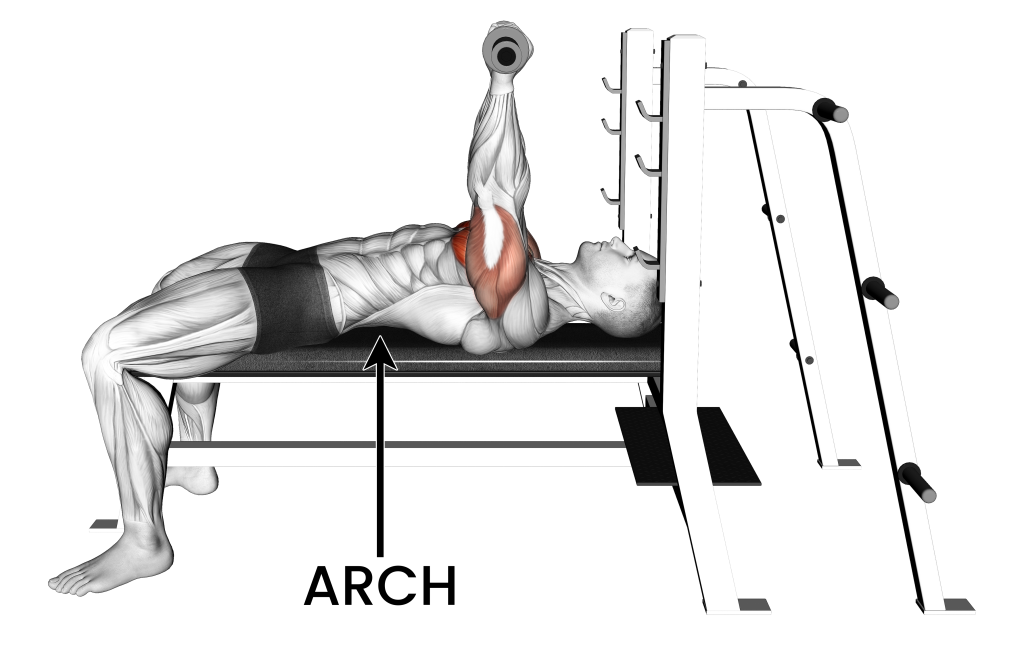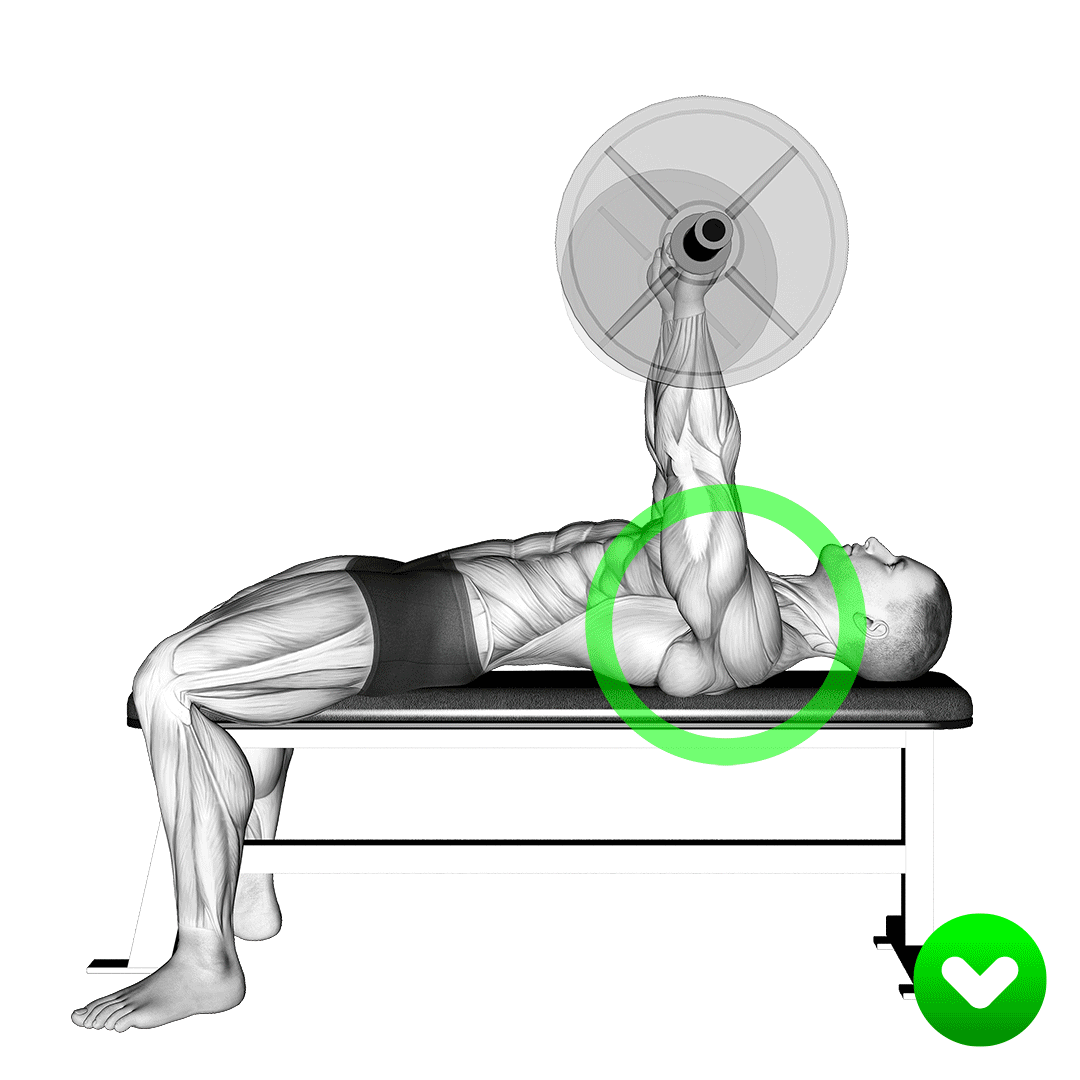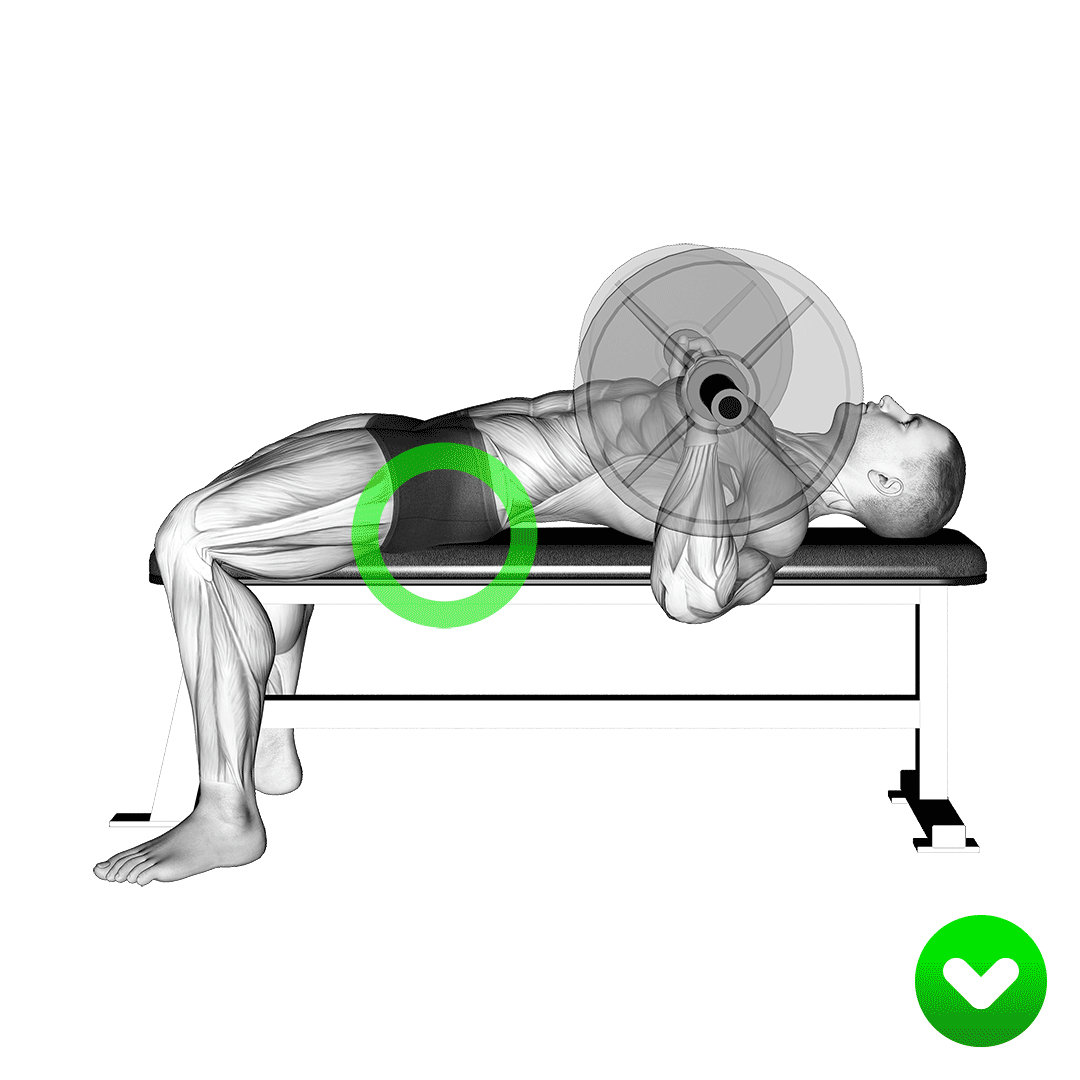Bench Press Arch: The Purpose Explained
A common point of debate among weightlifters is whether arching the back while bench pressing is safe - or even needed at all.
Proponents for the bench press arch will show the obvious advantage it provides in terms of strength and the capacity to move weight - but those against it will also say that the shorter range of motion might equate to less overall hypertrophy.
Before diving into the more fine aspects of the bench press arch, we should first ensure that we are on the same page: the bench press arch is the intentional curvature of the lower back while performing a bench press repetition, with the scapula and pelvis remaining in-contact with the bench.
What is the Bench Press Arch?
In more technical terms, the bench press “arch” is a form cue where the lifter will initiate lower back flexion in such a manner that the torso forms an arch shape, with the upper back and glutes acting as anchors.

This is often supported by bracing the core to a small extent, and will alter the mechanics of the bench press in regards to shoulder rotation and the touch-point of the bar along the upper torso.
Creating an arch while bench pressing requires that the lifter retract their scapula beneath them and “pin” it against the bench, thereby forcing the shoulders to remain in an advantageous position, even with the additional loading of the barbell.
Furthermore, this pinning of the shoulder blades will reduce the distance with which the arms can fully extend, thereby also reducing the range of motion - a factor that powerlifters use to great effect.
Should the Bench Press Have an Arched Back or Flat Back?
Though there are many benefits to performing the bench press with an arch, it is not entirely necessary, and can even be counter to the goals of the lifter in certain situations.
For the most part, performing the exercise with the back arched is best used if the lifter’s goals are related to increasing the maximum amount of weight they wish to lift, or otherwise creating as efficient a movement as possible (in terms of strength output).

On the opposite end, performing the bench press with the back flat against the bench is better for increasing the range of motion. So long as proper form is followed - especially in relation to the shoulders - then the flat back bench press is safe to do, albeit some adjustment needed.
So - should the bench press have an arched back, or a flat back? In truth, both answers are correct, so long as they fit into the lifter’s own needs and goals.
Advantages of Arching the Back During the Bench Press
While we’ve covered the possible advantages of maintaining a flat back during the bench press, there are admittedly more benefits to keeping a moderate arch instead - many of which have to do with actual safety and strength output, making the bench press arch an invaluable tool for powerlifters or novice athletes.
More Advantageous Positioning
Not only does keeping the bench press arch ensure that your muscles are in the right position for force output, but so too does it allow for the body to maintain an advantageous position of the entire kinetic chain.
This allows force from the legs to be translated into the upper body with the most efficiency, as well as any instability to be reduced as much as possible due to the tension held throughout the torso and shoulders.
In short - the bench press arch is ideal for ensuring that the body is as stable and effective at force output as possible, especially when combined with other form cues like setting the heels behind the knees and “bending” the bar through the hands.
Far Greater Loading Potential
Because of the force translation from the lower body and shorter range of motion derived from arching the back, lifters will find that they are able to move far more weight than they would otherwise be able to with a flat back bench press.
While total weight load isn’t the only factor contributing to mass and strength development, it is nonetheless excellent for those seeking to directly improve their bench press strength, or athletes wishing to better condition their body to high levels of resistance.
Shoulders and Scapula are Pinned into Place
When performing the bench press without the back being arched, the scapula may accidentally be extended to either side, thereby allowing the shoulders to rotate forward - a major error in bench press form, as it can cause the shoulder’s tendons to tear or otherwise entirely dislocate the ball-and-socket joint that comprises it.

Arching the back ensures that this does not occur, as it will require the lifter to “pin” their shoulder blades beneath them, thereby preventing them from moving in the wrong direction and by extension protecting the shoulders themselves from being put in a disadvantageous position while under load.
Greater Lower Pec Recruitment
Because the shoulders are prevented from rotating forward when a bench press arch is used, the lifter will find that the lower section of their chest muscles is recruited to a greater degree - thereby improving the general appearance and strength output of the pectoral muscle group.
This is an especially important benefit for lifters who find that their lower chest is lagging behind the upper chest, as it can shift the focus somewhat and help them overcome the imbalance without the need for additional isolation exercises.
Can the Bench Press Arch Cause Back Pain?
When performed in excess or improperly - yes, the bench press can indeed result in some level of injury occurring in the back.
While this is relatively uncommon (and one of the few disadvantages to the bench press arch), it can be largely avoided by performing proper mobility work and ensuring that the pelvis and shoulders act as anchors with which the drive of the legs may be translated through, ensuring that the spine does not need to bear any of the force therein.
For lifters having trouble maintaining their arch and thereby experiencing discomfort from it, there are several tips that can help keep a healthy back curvature during the bench press.
How to Keep the Back Arched During the Bench Press
Novice lifters or those returning to the gym after an injury may find that keeping their arch steady and braced can be difficult.
Fortunately, with proper mobility work and following several form cues, any lifter should be able to maintain a moderate back arch while performing the bench press with all the advantages that it brings.
Perform Mobility Work
A major limiting factor to being able to maintain a bench press arch is mobility - be it lower back, scapula or even the pelvis to a certain extent.
While a moderate bench press arch is unlikely to require any impressive level of mobility in any of these areas, it can nonetheless be affected by poor lower back mobility, of which is a common symptom of a sedentary lifestyle.
In order to alleviate poor mobility in these areas, lifters will wish to include targeted and dynamic stretches of the shoulder blades, hips and back in their mobility routine.
Practice Pinning the Hips and Shoulder Blades
The bench press arch is less “bending” the lower back and more producing an arch by anchoring the hips and upper back to the bench, thereby ensuring that they remain stationary and that the shoulders do not rotate improperly despite the curvature of the lower back.

For lifters having trouble maintaining these two points, it is best to practice the position while holding an empty bar - taking careful time to ensure that the pelvis is touching the bar and that the shoulder blades are retracted and pushed into the bench beneath the lifter’s torso.
Learn to Use Leg Drive to “Grind” Into the Bench
Half of the strength advantage brought on by a bench press arch is caused by better translation of drive from the legs to the upper body.
This can be further enhanced by allowing the leg drive to “grind” the back and pelvis into the bench, making use of friction so as to create more tension in the body, and therefore improve the bench press arch itself.
Frequently Asked Questions (FAQ)
Is it OK to Arch Your Back When Bench Pressing?
Yes - it is entirely fine to utilize a bench press arch, especially if you are a powerlifter or other strength-focused weightlifter that wishes to maximize how much weight is placed on the bar.
Even in cases where you do not care for how much weight is being lifted, properly utilizing a bench press arch can allow for a safer bench press overall, as it ensures that the shoulders are kept in the correct position throughout the exercise.
Is Arching on Bench Cheating?
Though it is often up for debate, so long as the pelvis and upper back are in-contact with the bench, it is not considered “cheating” to use a bench press arch - even if it does indeed allow the lifter to move far more weight.
Is it Better to Bench Without an Arch?
Only in certain cases where the lifter requires a larger range of motion or cannot otherwise create a safe bench press arch.
Performing the bench press with a flat back is a somewhat more advanced technique that requires the lifter to have greater familiarity with safe bench press form, as it does not feature the same form cues as a bench press performed with a lower back arch.
In Conclusion
Keep in mind that the general advice is to start with the bench press arch, and to only use a flat back during the bench press if the lifter finds it to be uncomfortable or counter-intuitive to their goals.
Despite the debate, there is little doubt as to whether the bench press arch is actually useful, and it is a good idea to at least try the bench press with a lower back arch so as to see if it is compatible with the lifter’s own physiology.
References
1. Ribeiro Neto F, Dorneles JR, Luna RM, Spina MA, Gonçalves CW, Gomes Costa RR. Performance Differences Between the Arched and Flat Bench Press in Beginner and Experienced Paralympic Powerlifters. J Strength Cond Res. 2022 Jul 1;36(7):1936-1943. doi: 10.1519/JSC.0000000000003736. Epub 2020 Jul 27. PMID: 32740285.
2. García-Ramos A, Pérez-Castilla A, Villar Macias FJ, Latorre-Román PÁ, Párraga JA, et al. Differences in the one-repetition maximum and load-velocity profile between the flat and arched bench press in competitive powerlifters. Sports Biomech 10: 1–13, 2018.
